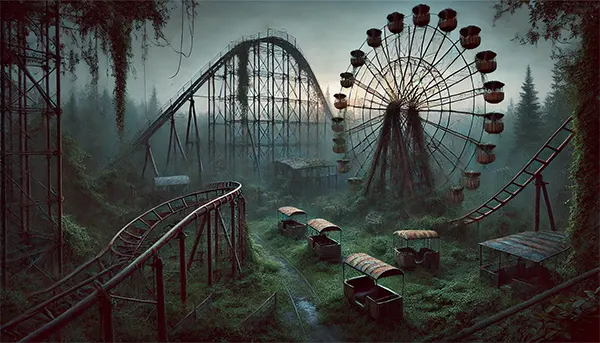
Dark Tours: Exploring Mystical and Abandoned Locations
Dark tourism, a growing trend among adventure seekers and history enthusiasts, involves visiting places with eerie pasts, tragic histories, or abandoned structures. These locations captivate visitors with their mysterious atmosphere and often hold untold stories. Whether it’s forgotten asylums, deserted towns, or ancient haunted sites, each destination offers a unique glimpse into history’s darker side.
The Allure of Abandoned Places
Abandoned locations have long fascinated travellers, historians, and urban explorers. The sense of stepping into a forgotten world, where time has stood still, creates an unforgettable experience. These places often hold a blend of history, tragedy, and mystery that makes them appealing for dark tourism.
One of the most famous abandoned places is Pripyat, Ukraine, the city frozen in time after the Chernobyl disaster. Visitors walk through empty streets, schools with scattered books, and homes left exactly as they were decades ago. It serves as a chilling reminder of the past and a powerful lesson in history.
Another well-known abandoned site is Hashima Island in Japan, once a bustling coal-mining community. Now, the island stands as a ghost town with crumbling buildings and silent streets, offering a glimpse into a once-thriving industrial era that collapsed almost overnight.
Haunted Castles and Their Secrets
Haunted castles attract many dark tourism enthusiasts who seek paranormal experiences. Across Europe, centuries-old fortresses with tales of betrayal, ghostly sightings, and dark pasts provide visitors with thrilling encounters.
One of the most infamous is Leap Castle in Ireland, known for its violent history and eerie legends. Visitors have reported seeing shadowy figures and hearing unexplained whispers in its dark corridors.
Similarly, Bran Castle in Romania, often linked to the Dracula legend, draws thousands of tourists every year. Although its ties to Vlad the Impaler remain debated, the castle’s gothic appearance and chilling atmosphere make it a prime location for those intrigued by supernatural folklore.
Exploring Forgotten Asylums
Abandoned psychiatric hospitals are among the most unsettling destinations for dark tourism. These institutions, once home to thousands of patients, often have disturbing histories of outdated medical treatments and tragic stories.
One of the most famous is Waverly Hills Sanatorium in the USA, known for its association with experimental tuberculosis treatments. Visitors claim to have experienced strange noises, unexplained movements, and ghostly apparitions in its dimly lit halls.
Similarly, Beelitz-Heilstätten in Germany, a former sanatorium and military hospital, is an eerie place filled with decaying buildings and remnants of the past. With its dark corridors and abandoned operating rooms, it offers a chilling experience to those brave enough to explore.
Urban Legends and Local Myths
Dark tourism often intertwines with local myths and legends, adding an extra layer of intrigue to abandoned locations. Many places have tales of supernatural beings, tragic events, or unsolved mysteries that captivate visitors.
For example, the Island of the Dolls in Mexico is infamous for its eerie collection of dolls hanging from trees. The legend states that a former resident placed the dolls to appease the spirit of a drowned girl, creating a spine-chilling atmosphere that attracts daring travellers.
Similarly, the Paris Catacombs hold a dark reputation. This underground labyrinth, filled with the remains of millions, is known for its unsettling silence and mysterious tunnels, some of which remain unexplored to this day.

Ethical Considerations in Dark Tourism
While dark tourism provides unique experiences and historical insight, it raises ethical concerns. Some locations are sites of past tragedies, and visitors must approach them with respect and sensitivity.
For instance, places like Auschwitz-Birkenau serve as memorials to those who suffered, and it is crucial that visitors treat them with the solemnity they deserve. Misconduct or treating these sites as mere tourist attractions can be deeply offensive.
Responsible dark tourism involves understanding the significance of these places, preserving their history, and supporting local efforts to maintain them. By visiting with respect and an open mind, travellers can appreciate the importance of these locations while honouring their past.
Preparing for a Dark Tourism Adventure
Exploring abandoned and mystical locations requires careful planning. Safety should always be a priority, as many sites are structurally unstable or legally restricted.
Travellers should research legal access before visiting abandoned places, as trespassing can lead to serious consequences. Joining guided tours ensures safety and provides valuable insights into the history of the location.
Additionally, visitors should equip themselves with proper gear, such as flashlights, protective clothing, and first-aid kits. Being respectful of local customs and regulations also ensures a positive and ethical dark tourism experience.
